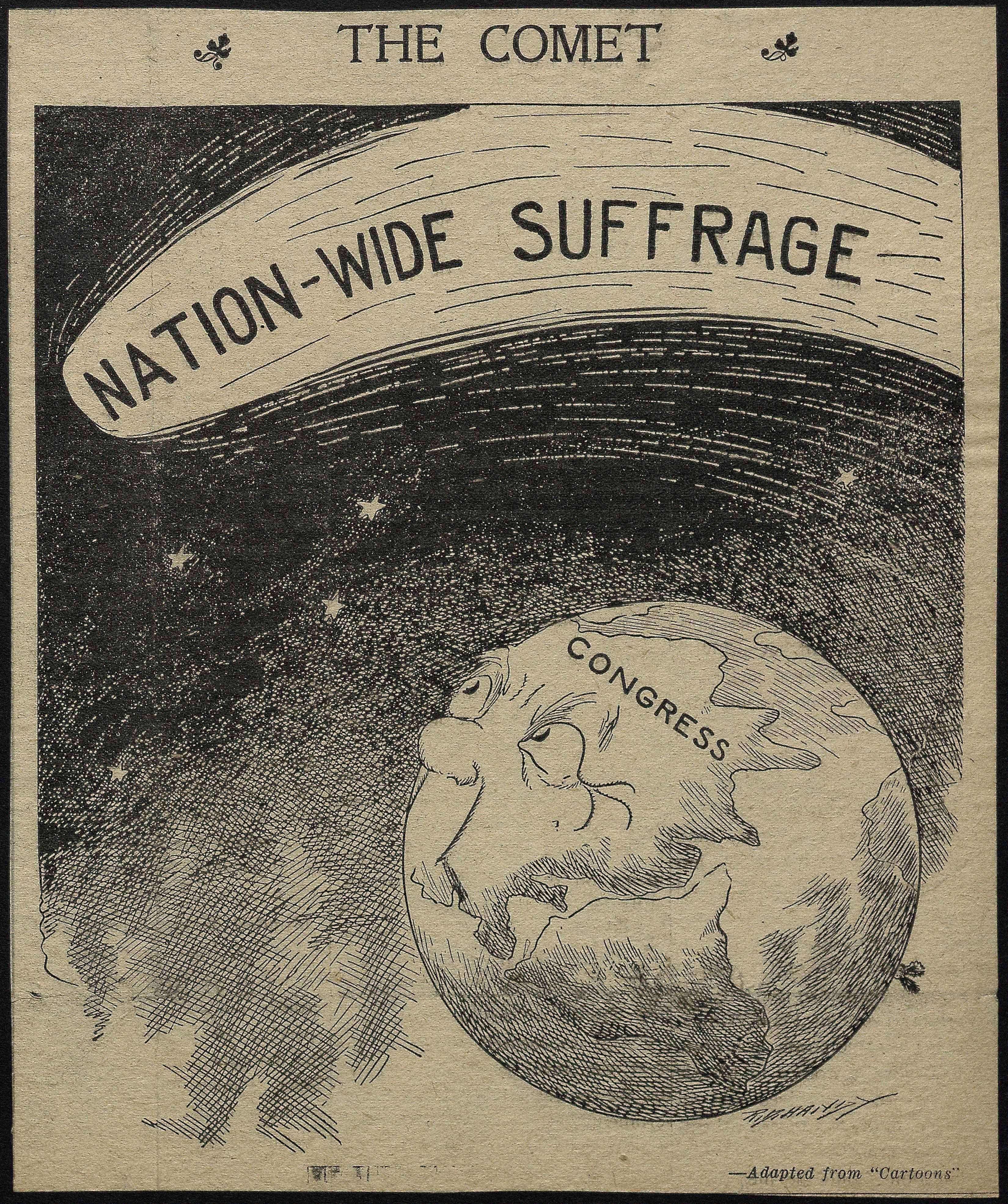Government and Politics
Some of the most substantial changes in the history of gender have been enacted by governmental policy, either due to lobbying by organisations and activists, or through conscious decision making by those in power. These changes and developments made by governmental bodies and prominent political figures in the twentieth and twenty-first centuries can be traced within Gender: Identity and Social Change.
The Carrie Chapman Catt papers from Bryn Mawr College contain a vast array of pro-suffrage political cartoons from the years preceding the passing of the Nineteenth Amendment. A cartoon in the Evening Telegram Post – “Another Dark Alley to Go Through”- illustrates the struggle that campaigners faced getting the suffrage amendment passed due to the attitude of the United States Senate. A separate cartoon from a year later called “Almost Thru the Dark Alley” indicates the near success of the Suffrage Amendment in its passage through the Senate. Most political cartoons featured in the resource view the United States Congress as the main obstacle that needed to be surmounted for women to be granted enfranchisement. This view is compounded by the mocking anthropomorphism of Congress into an old man in “At His Door”; a cartoon featured in the Ohio Gazette in 1918. Cartoons with a more localised focus also feature and debunk the notion (by using the results of elections in Chicago) that there would be low female participation in nationwide elections if women were granted universal suffrage.
The status of women and improving the conditions that women were living in became a key focus for Canadian Liberal Parties in the 1970s, which is evidenced by their election materials. The Party’s material – which comes from the Glenbow Museum – shows how election candidates both extolled the reforming nature of the Liberal Party towards rights of indigenous peoples and women and stood on a campaign platform of better women’s rights in the Alberta provincial elections. Indeed, it was five women from Alberta (now known as “The Famous Five”) who successfully campaigned for women to be appointed to the Canadian Senate after the Judicial Committee of the Privy Council overturned the negative resolution of the Canadian Supreme Court in 1929. The legacy of the Famous Five in challenging the prevailing politics of the time is still celebrated in the twenty-first century and users can consult the Famous Five Foundation’s material for the celebration and commemoration of the five women. The campaigns for equal representation in Canadian politics is also highlighted by material from Women for Political Action, including a questionnaire designed to get a better understanding of how responders view the political issues of women in government.
 The issue of the representation of women in government hadn’t been solved in both the United States or the United Kingdom nearly fifty years on from the “Famous Five” ruling. Campaign material belonging to Women For Parliament, an organisation which advocated for a greater representation of women in the British Parliament can be consulted alongside similar documents pertaining to the involvement of women in American politics during the 1970s. Some earlier material from the Jane Norman Smith papers also details the campaign that Clarence M. Smith led against the view that women were failing as jurors in the 1920s and 1930s. Government and Politics within this resource is both wide-ranging and incredibly specific and users can find a range of material relating to many different political issues as evidenced here.
The issue of the representation of women in government hadn’t been solved in both the United States or the United Kingdom nearly fifty years on from the “Famous Five” ruling. Campaign material belonging to Women For Parliament, an organisation which advocated for a greater representation of women in the British Parliament can be consulted alongside similar documents pertaining to the involvement of women in American politics during the 1970s. Some earlier material from the Jane Norman Smith papers also details the campaign that Clarence M. Smith led against the view that women were failing as jurors in the 1920s and 1930s. Government and Politics within this resource is both wide-ranging and incredibly specific and users can find a range of material relating to many different political issues as evidenced here.


